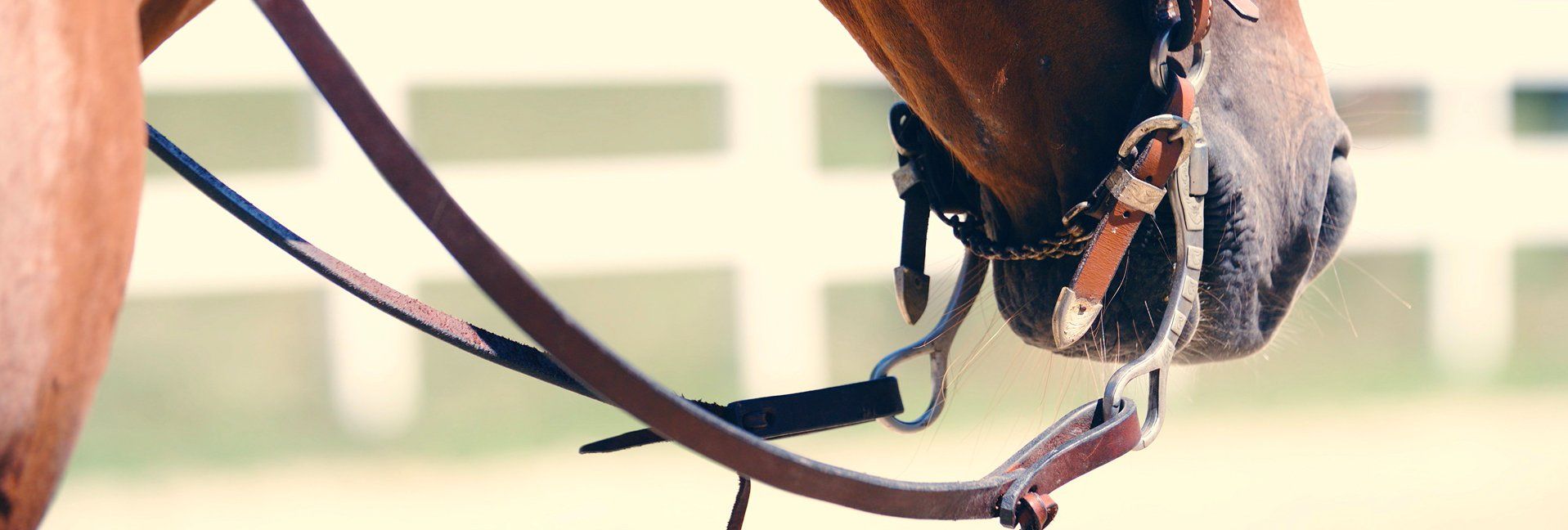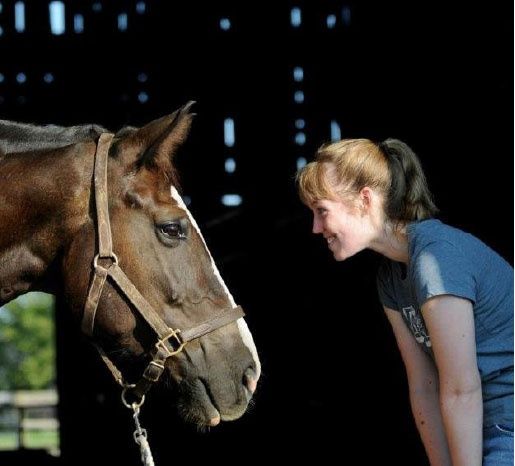When it comes to halters, is there a right and wrong?


If I’ve learned anything about horsekeeping in my time, it’s that it bears a remarkable resemblance to parenting in that people have very different philosophies of the right way to do it, and all of them are convinced theirs is the best.
For something as simple as haltering horses, in social media you’ll find conflicting (and strong) opinions about the best material to use in a given circumstance. But what’s the right way?
A halter is only as good as the horse it’s attached to.
The basics: materials
The most common material for halters is nylon, which is cheap and available in a variety of colors and patterns. Nylon is known for its strength and durability, but it is susceptible to fading. People who prefer nylon enjoy how low-maintenance and inexpensive it is.
Some disciplines prefer leather halters, which are a bit more flexible and have a more classic look. Western disciplines often use rope halters made from one or two-ply lines of cord with strategically-placed knots on the headstall and noseband.
Newer synthetic materials like BioThane and Beta BioThane combine the pliability and softness of leather with the color and strength of nylon.
The great debate
Some horse owners will tell you the trouble with nylon’s durability is that it won’t break if the horse gets the halter caught on a hoof or a bit of fencing or doorframe. Other owners wonder: If you’ve tied the horse to a hitching post or cross tie, don’t you want a material they can’t easily snap to escape the tie?
Dr. Kris Hiney, assistant professor and extension equine specialist at Oklahoma State University, explains who who’s right in this situation.
First of all, Hiney says, nylon isn’t totally fool-proof.
“Yes they are tough, but that is the point,” said Hiney. “And some nylon halters can fail too. I’ve seen the holes fail if horses pull back hard enough. The Western philosophy is more in line with if the horse is tied, it shouldn’t be able to break away.”
As far as a horse who’s turned out, what’s safest depends on who you ask…and on the horse.
“If the horse is not hard to catch—no halter for turn out. Even then, most horses are easier to catch with a slide of rope around the neck versus hand going towards their head. Why take the chance and some horses like to play tug of war with other horses’ halters? But if you are using grazing muzzles—you have to have one.”
One compromise if you do need to put a horse out with a grazing muzzle (or if you like to have a halter on top of a fly mask to keep it on), you can replace the over-ears portion of a synthetic halter with a leather strap which can break away if the horse experiences poll pressure.
Trailer tough enough
The one place where some people do reach for a tougher material is on the way to the trailer. If you’re unlucky enough to unload a panicky horse on a roadside, the last thing you want is for a leather halter to snap and leave the horse loose in the trailer (or worse, on the way out of it).
In this situation, Hiney prefers to put up gates to restrict horses rather than tying them. If you must tie, Hiney recommends products like Tie-Safe ties which are designed to respond to tension by letting out some slack at a pre-determined length—theoretically, the horse will stop panicking and pulling back if the pressure over their poll decreases.
Where does that leave rope halters?
“They definitely have their use,” said Hiney. “The nice thing is they will fit a wider variety of head sizes, and if you are going out in the pasture to collect a horse, you may not want to bring a variety with to see which fits. A too-large nylon halter won’t resize as easily as a rope halter.
“Rope halters are also used quite a bit for training. The narrower material exerts more focused pressure – easier to get your point across or have a bit of leverage advantage when you need it. With that said, you need to be aware of how sensitive the horse is and how to use them appropriately.”
Rope halters need to be adjusted properly to fit a horse’s head. They shouldn’t droop on the nose or under the chin. (Dr. Hiney says many people adjust them too large.)
One final note about halters: they’re only as good as the horse they’re attached to.
If you’re dealing with a horse who tends to break out of ties or panic in trailers often, some additional desensitization training may be as important to safety as the equipment you use.
Tags:Horse Sense

Acreage Life is part of the Catalyst Communications Network publication family.
















